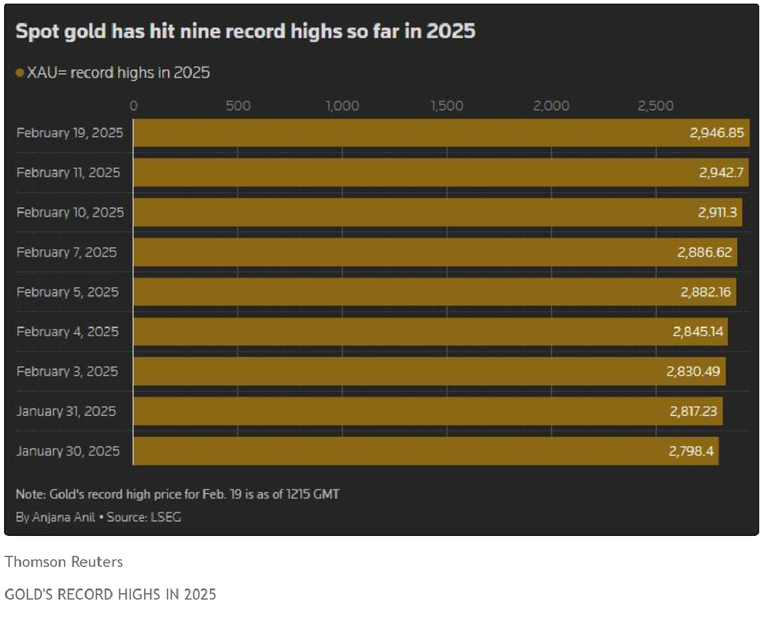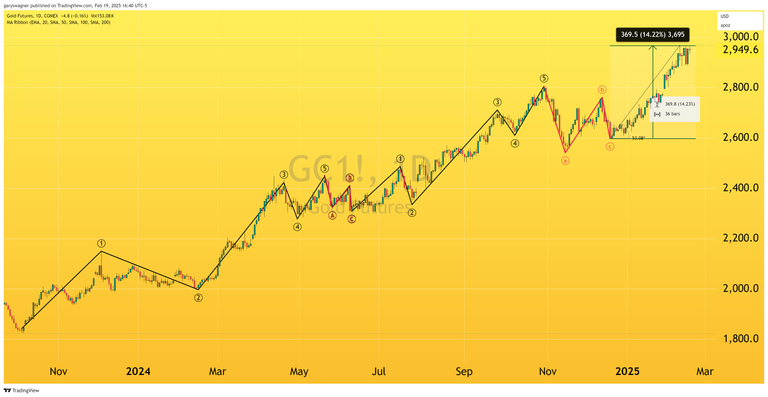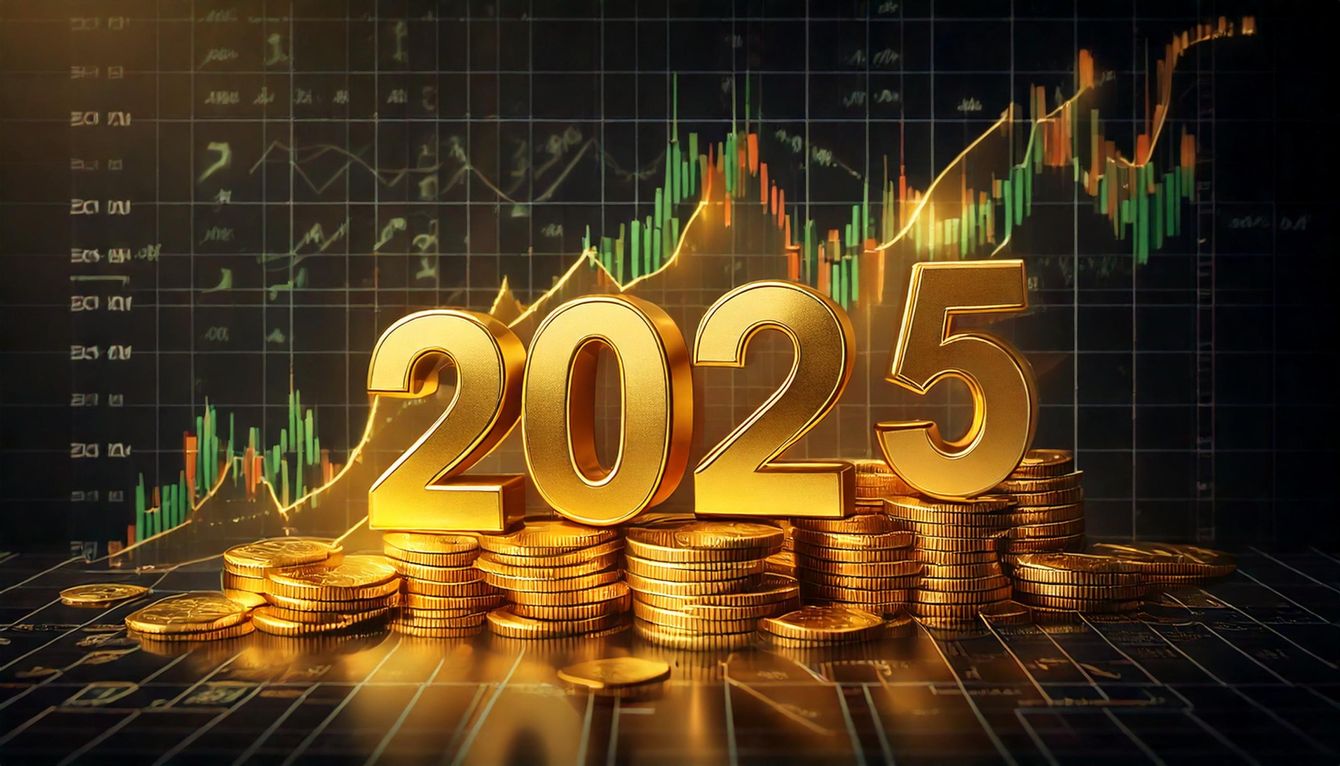Gold continues its remarkable ascent in 2025, achieving nine record highs year-to-date despite recent price fluctuations. The precious metal has demonstrated exceptional performance, with futures contracts gaining about 11% since January and nearly 4% in February alone.
The most recent trading sessions have showcased gold's resilience and volatility. Following a sharp decline of $45 per troy ounce in spot gold and a $63 drop in April futures on Friday, February 14, the market demonstrated strong recovery momentum. After the Presidents' Day holiday closure, Tuesday's trading saw spot gold gain $36.97, and the April futures contract gaining $60.70, nearly reaching the record levels established on February 12.

Today's trading session witnessed modest profit-taking, with prices holding remarkably close to historic highs. The April futures contract settled at $2,951.00, reflecting a minimal decline of $3.40 or 0.11%. Similarly, spot gold showed remarkable stability, closing at $2,935.33 with a negligible decrease of $0.14.

Market dynamics are being significantly influenced by recent Federal Reserve developments and evolving trade policies. The latest FOMC meeting minutes revealed a cautious approach among Federal Reserve officials, who seek more concrete evidence of inflation control before implementing the first rate cut of 2025. This stance follows last year's monetary policy adjustments, which included three separate 25-basis-point rate reductions.
Adding complexity to the economic landscape is the administration's proposed trade policies. President Trump's recent announcements regarding potential tariffs have introduced new variables into the market equation. His proposal includes a 25% tariff on automotive, semiconductor, and pharmaceutical imports, building upon earlier plans to impose duties on steel and aluminum imports announced on February 9.
These trade policy proposals have sparked diverse reactions within the Federal Reserve. The FOMC minutes indicate a split in perspective among Fed officials. Some members anticipate positive economic growth potential from tax modifications and deregulation efforts. However, others express concern about the inflationary implications of higher import prices resulting from the proposed tariffs.
The precious metal's current trading patterns reflect both its traditional role as a safe-haven asset and investors' responses to evolving economic conditions. The sustained strength in gold prices, despite occasional profit-taking, suggests ongoing market confidence in the metal's value proposition amid economic policy uncertainties.
As markets continue to process these various factors, gold's performance remains a key indicator of investor sentiment and economic expectations. The metal's ability to maintain price levels near historic highs, even in the face of short-term fluctuations, underscores its enduring appeal as a strategic investment asset in times of policy transformation and market adaptation.
For those who want more information on our premium service, please click the link Premium Service
Wishing you, as always good trading,

